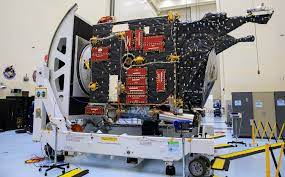- NASA’s DSOC experiment, which is aboard the Psyche spacecraft, recently showed effective data transfer to Earth via near-infrared laser pulses.
- This technique solves the problem of sending massive volumes of data across great distances from spacecraft travelling at high speeds in outer space.
- NASA’s DSOC project uses near-infrared laser beams to communicate with spacecraft.
- DSOC offers data rates that are at least ten times quicker than traditional radio communication systems, resulting in faster data transfer rates, higher-resolution photos, greater scientific data volume, and even real-time video streaming.
- The laser communication technique developed by DSOC is akin to how fibre optics revolutionised terrestrial telecommunications.
DSOC and Psyche Spacecraft
- Psyche is the first spacecraft to carry a DSOC transceiver, which will be used to test high-bandwidth optical communication with Earth during its two-year journey to the asteroid belt.
- When the transceiver locked onto a strong laser beacon sent from NASA’s Table Mountain Facility in California, the DSOC achieved its “first light” milestone.
- High data rates need incredibly accurate targeting, which is analogous to shooting a small target from a big distance while both are moving.
- This accuracy is required for the laser transceiver to monitor its target despite spaceship oscillations.
Important Success Factors
- To guarantee accuracy, the spaceship must shield the transceiver from vibrations.
- DSOC mechanisms adapt to maintain correct pointing when the Earth and spacecraft move during data transmission.
- To retrieve information from weak laser signals carried across huge distances in space, new signal-processing techniques are required.
Source: https://www.nasa.gov/mission/deep-space-optical-communications-dsoc/


